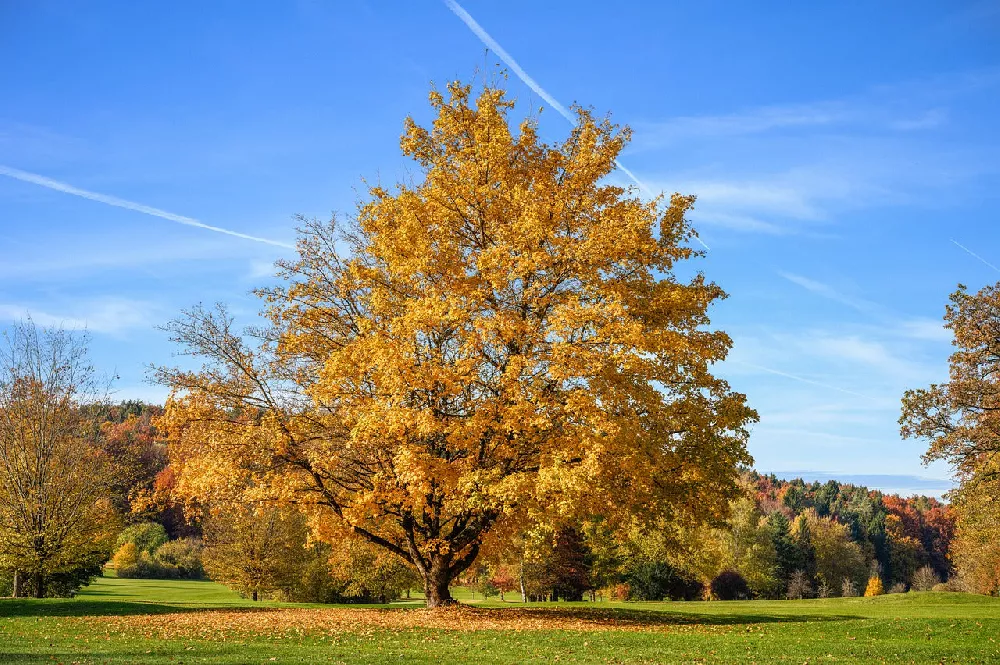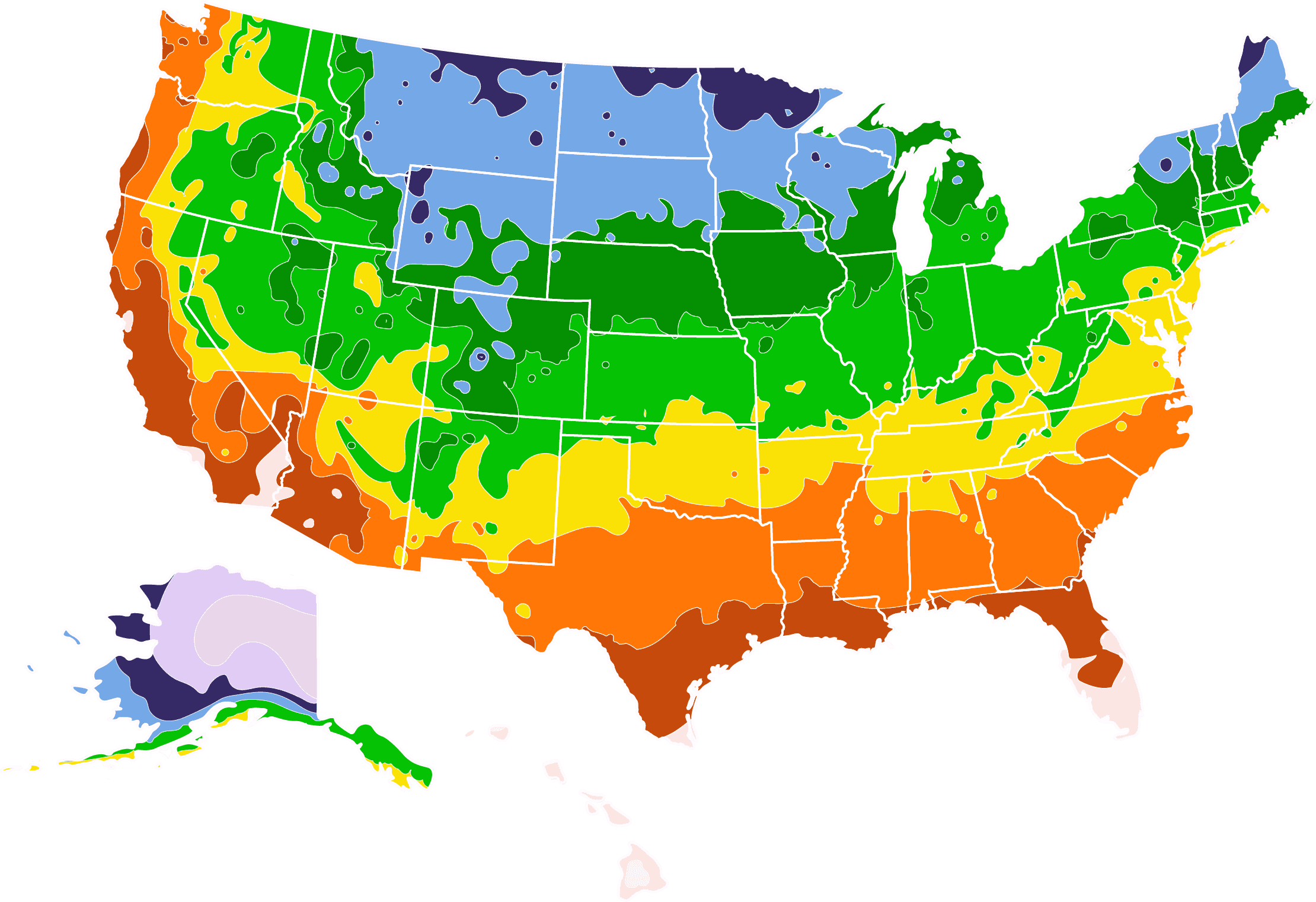- Home >
- Maple Trees >
- Silver Maple Tree
Silver Maple Tree for Sale - Buying & Growing Guide
- Ships in 1-2 days
- 1-Year Warranty Eligible
- Pots or accessories are not included unless specified in the product options.
Shipping Details:
Once your order is shipped, you’ll receive an email with a tracking number and estimated delivery date. Most orders ship immediately, but some items are seasonal and may only ship in spring or fall. These products are noted on the website.
If you are looking for a shade tree that will grow quickly, then the silver maple is a plant you should consider for your yard. This species, known botanically as Acer saccharinum, grows to an impressive size with large branches that form a pleasing vase-like shape. Not only does this tree provide shade, but it also impresses with its textured bark and its lovely fall color. The Silver maple tree also proves to be easy to care for at a mature age; it can tolerate both drought and excessive moisture.
- Grows quickly and provides shade faster than most species.
- Offers ornamental value in multiple ways, including its growth habit and fall color.
- Tolerates both drought and flood-like conditions once mature.
Plant Care
Sunlight

Grows best in either full sun or partial shade. Needs at least four hours of light per day.
Watering
Maintain soil moisture while the plant is young. Once established, the silver maple is drought-tolerant.
Fertilizing

Fertilize once per year with a formula rich in nitrogen and potassium.
Planting and Care
Planting instructions
Silver maple trees grow in hardiness zones 3 through 9. When selecting a location for your maple tree, you should find an area with moist, acidic soil. It’s also wise to give a silver maple tree plenty of adjacent space into which it can spread. At maturity, silver maple trees are quite large, reaching more than 50 feet in both height and spread, with a distinct vase-like shape. Giving silver maples some protection from wind is also a wise decision. This plant can have weak branches that may break when faced with a significant force.
Watering and nutrients
Silver maple trees grow best when they have consistent soil moisture. Watering regularly is most crucial when the plant is young and continuing to establish itself. Once a silver maple has reached maturity, its supplemental watering needs are essentially nonexistent. A mature and healthy silver maple will survive in both drought and flood-like conditions.
Fertilize your silver maple once per year in the early spring. Provide fertilizer that has higher volumes of nitrogen and potassium. You can also amend the soil to ensure that the pH remains low, which is what the silver maple tree prefers.
Pollination
Silver maple trees bloom early in the spring and can spread their pollen via the wind. However, these trees tend to rely on pollinator insects as well, including bees. During the early part of the season, the flowers of a silver maple tree can serve as an important nectar source for insect pollinators. Some silver maple trees have both male and female flowers, but most have one or the other. Interestingly, some silver maple trees show the ability to change the sex of their flowers when a new season begins.
Pruning
The best time to prune a silver maple tree is in the late winter or spring, when the tree is in its dormant phase. During this period, you should remove any part of the tree that is damaged or shows signs of disease.
It’s important to prune silver maple to encourage it to send its growing energy to its strongest limbs. Silver maples can be prone to breakage, especially when you allow weak limbs to remain on the tree.
Pest, diseases, and animals
A silver maple tree can have problems with several types of pests and diseases. Yellow-bellied sapsucker, bagworm, and scale insects are some of the most common pests.
Silver maples can also have issues with crown gall and fungal diseases, including anthracnose. Chlorosis can also arise in silver maples. This issue is typically the result of poor soil conditions, such as a pH that is too high. When this condition occurs, it is usually easy to identify — the leaves will turn yellow rather than green.
Harvesting
While people often grow silver maple trees for ornamental purposes, you can also grow this tree with the goal of harvest. Silver maples don’t produce fruit that humans eat, but, as with many maple tree species, their sap can be used to make maple syrup.
In the late winter and early spring, when the tree is exiting its dormant period, sap will begin to flow through the trunk and limbs. Connecting a tap to a silver maple tree at this time allows you to harvest the sap and transform it into maple syrup.
Achieving maximum results
One of the biggest issues gardeners face when growing silver maple trees is that this species can break somewhat easily. Do your best to place your silver maple where it has some wind protection and where it is unlikely that excessive amounts of snow will fall on it. It’s also important to prevent the soil of a silver maple tree from becoming too dry. Dry soil is most detrimental when the tree is young and still attempting to establish itself.
FAQs
Are silver maples fast-growing?
Silver maple trees are quite fast-growing. In the right conditions, these plants can add as much as 2 feet of new growth in a single growing season. This quick growth rate allows a silver maple to reach its massive mature size in a relatively short time. The fast growth of a silver maple also makes it an excellent option for those who wish to add shade to their yard and don't want to wait too long to do so.
Is silver maple wood hard or soft?
Compared to most tree species, silver maple trees are soft-wooded. This quality leads to one of the most problematic traits of this tree. Since silver maple trees are so soft-wooded, they tend to break somewhat easily. This breakage tendency has caused some to choose other species over the silver maple. However, with the proper care and attention, silver maples can be a fantastic addition to most landscapes.
What color do silver maple leaves turn in fall?
Many silver maple trees turn yellow in the fall, but others can show more variety in their autumn foliage colors. This deciduous species can show colors like red and orange during the fall season. The degree of shade that a silver maple experiences can alter the fall color it shows. For instance, a silver maple that receives more shade is more likely to show yellow as its fall color.
Compare Similar Products
You can't add more Product Name - Product size to the cart.
OK










